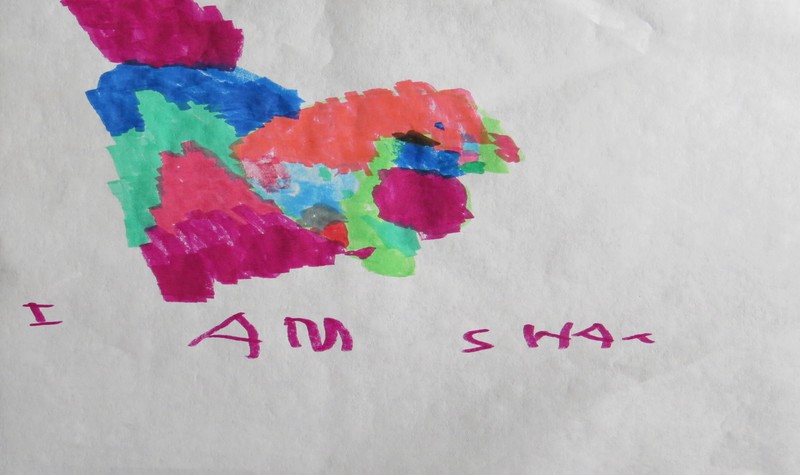Children can actually learn to read by writing. This post shows how children can learn to read by writing and the strategy of storing their early work in a binder.
Binders Become Books
I developed a great appreciation for binders when I moved to North Carolina after living in China for 5 years. (You can read my full teaching history here.)
Kindergarten
On August 13th, days before teachers began their meetings and preparations for school, I obtained a job teaching a Kindergarten Dual Language (Spanish/English) class. Before leaving for China, I donated all of my teaching materials to a school in Indiana. As a result, I brought ZERO materials with me to NC.
In China, I taught at a Public High School where there were 60 students per class, 20 classes per week.
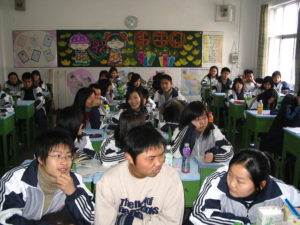
All I had to work with was a chalkboard and chalk. That’s where I developed 130 lessons to encourage Spoken English. China is truly where I learned to create engaging lessons with very little.
Arrived to the US with No Materials
So, I arrived to NC with literally no school materials. I walked into the fairly empty Kindergarten classroom. It was dusty from a summer of no use. There were tables, chairs, a few books, a closet full of used and unused items. I remember being impressed with how many materials there were in the closet.
And then, my eyes fell on 24 red and blue binders. I wish I had a picture and wonder if they’re still there.
24 Binders!
My assistant and I numbered the binders 1-24, odd numbers on red, even numbers on blue. That way we could reuse them year after year.
We assigned a number to each student and began storing their drawing and writing work in their binder days into the school year. Each day at the start of the writing block, the children would get out their binders and look over what they had drawn or written the day before. Then, they’d begin a new piece.
The 1st Book They Read
Essentially, the binder was the first book they read themselves. And the fact that they illustrated and wrote it, excited them. The kids consistently loved their binders all year long.
Home-Schooling
My 5 year old son is learning to read this way also. I introduced the binder to him at around 3 ½ years old and put his drawings in it. I also put his letter pages A-Z in it. He added stickers of pictures that began with each letter. I outline these activities in detail in my post titled: 16 Easy and Effective Ways to Use Stickers with Beginner Writers.
When he turned 4, I began walking him through the steps laid out in my post, Help Children Learn to Write: 10 Strategic Steps.
Storing drawings, stickers and pictures in a binder and having children add beginning sounds, simple words, sight words and sight word sentences to these drawings and pictures is perhaps the cheapest and rawest way to teach a child how to write and read.
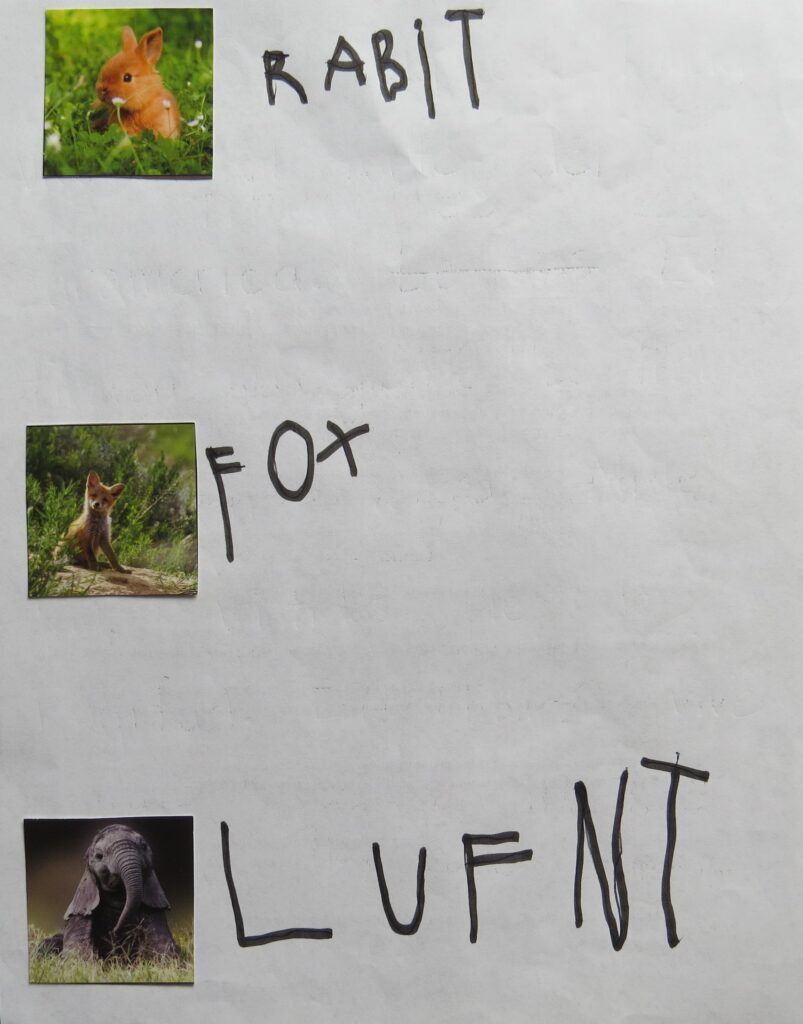

Homeschool curriculum can be costly. Workbooks and reading materials get expensive for schools. Culture in general pushes fun and fancy.
Keep It Simple
I understand fun! My whole blog is about how to make writing fun. But fun doesn’t have to involve expense and electronics. In fact, most young children ages 0-5 just want to be with their Mamas. And Kindergartners just want to be with their teacher. We can use this to our advantage. What we like to do, they’ll like to do. So, try sitting with your young child and start drawing and writing.
Hold Off on Electronics
The truth is, I strongly suggest you save the electronics for later. There’s plenty of time to introduce them. And once we do, it’s often a battle to keep children interested in anything else. Interestingly, children will learn to use computers and I-Pads at lightning speed. They will not “be, get or fall” behind if they don’t use them until they’re well into elementary school.
My boys are 8 and 7 and just this year, began using an I-Pad. Between the ages of 5-8 they were using the computer for www.starfall.com (age 5) typing words, sentences and stories in Microsoft Word (age 6), Khan academy (age 6-8) and www.code.org (age 6-8). Aside from their 30 minutes of computer time each day, they are so busy building, imagining, playing board games, drawing, talking, reading and biking. AND, they are strong readers and writers.
Convenience, Conversation and Low Cost
So back to our binders, I love the convenience, conversation and low cost of teaching writing and reading this way. Binders can be free or very cheap at garage sales or 2nd hand stores. This year at the Walmart back to school sales they sold them for 97 cents. I bought a couple, but do admit that they aren’t as sturdy as the other binders I have.
Staples-Clearance
At Staples earlier this summer they even had BB8, Finding Nemo, Minions, Power Rangers and Ninja Turtle binders for $1.00 each on their clearance shelf.
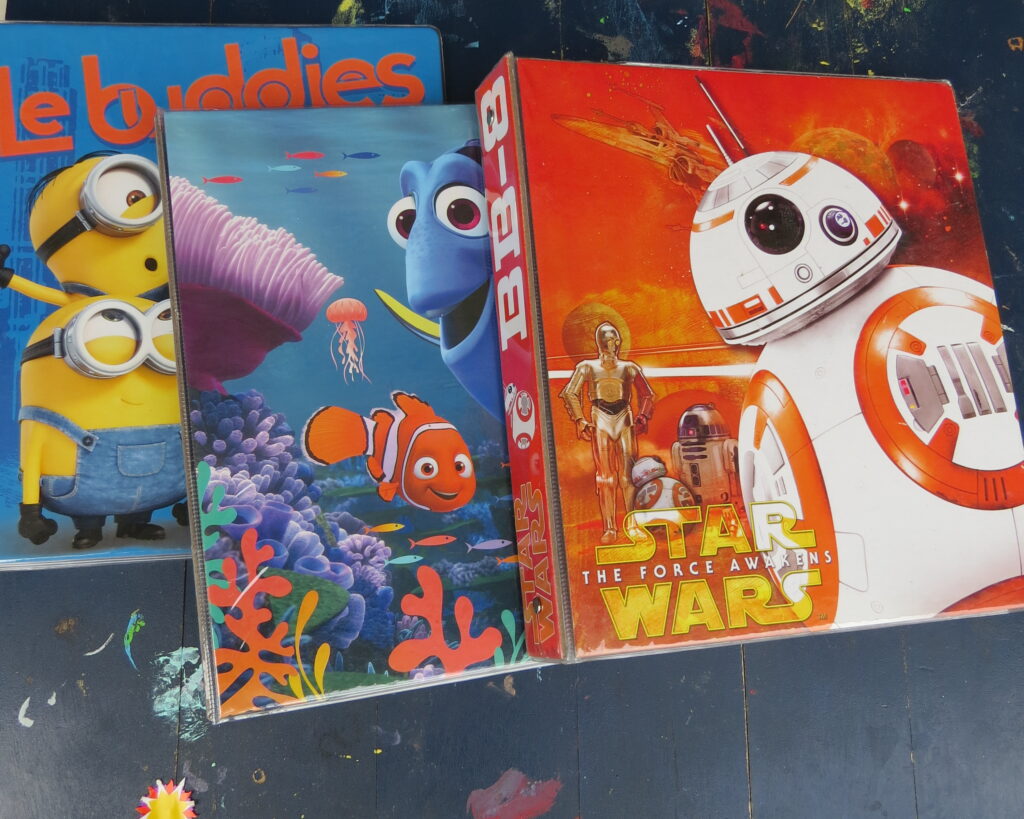
I bought 6 to divvy up among my boys and their homeschooling friends. Keep an eye out. Grab binders whenever you find them cheap or free. Otherwise, brand new binders can be pricey. Also, try to get clean ones that are in good condition, just because. They will last longer.
Lastly, binders are great because they can hold a lot of work and show children’s progress. Kids LOVE to go back and reread their work!!!
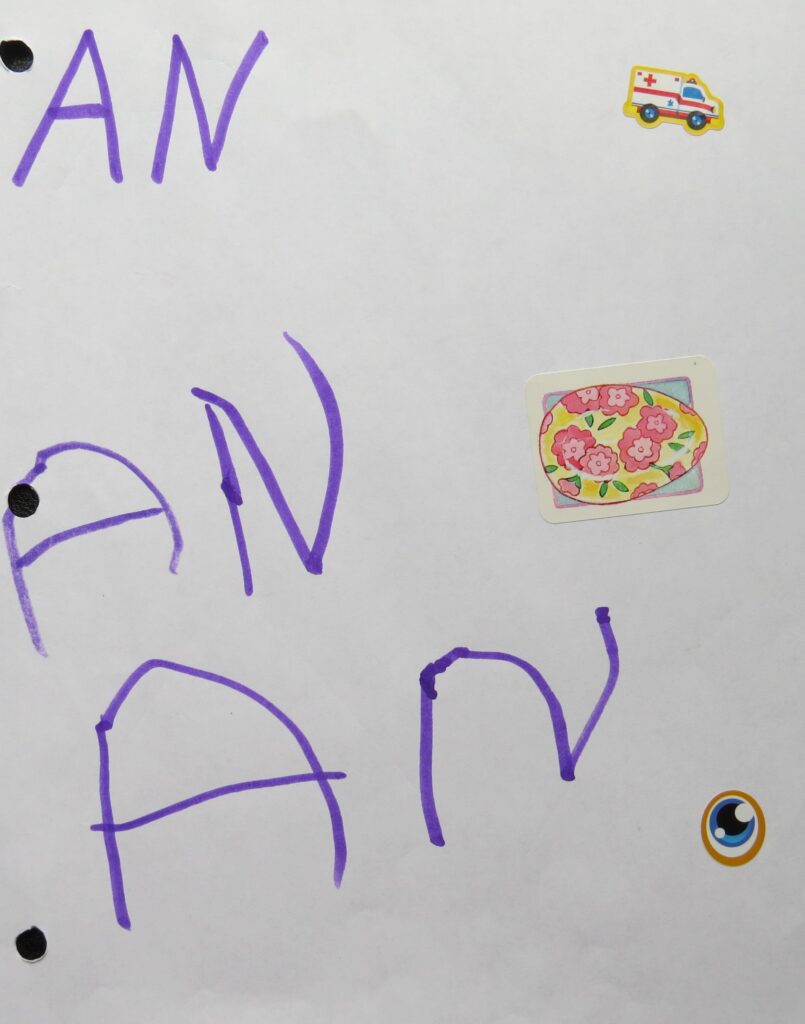

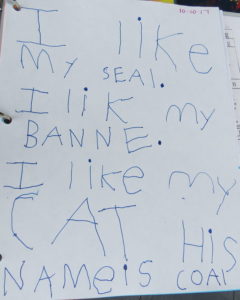
Children Learn to Read by Writing
Now let’s talk about how children can actually learn to read by writing first!
Most recently, my 5 1/2 year old son learned how to write the word FRIEND in a sight word sentence. After he learned how to write it, he could read it.
Writing slows the reading process down. As young children write their letter strokes and learn their sounds, they slowly see how the sounds are put together to form a word.
Dual Language Kindergarten
When I first taught Kindergarten I learned to teach the children how to read by writing.
As mentioned above, it was a dual language Spanish/English class. Half of the children spoke Spanish, half spoke English. I had to teach the children how to read in Spanish (which phonetically is much easier to do than English).
Morning Routine
Each day, as part of our morning routine, the children gathered around the classroom carpet with a small whiteboard, dry erase marker and sock to serve as an eraser. (You can purchase a class pack on Amazon*.)



In front of them, on lined chart paper, I showed them how to properly form their letters according to the guidance of our school occupational therapist and the program, Handwriting Without Tears.
Each week we focused on new letters and added them to known letters. In Spanish, vowels are taught first. So in the beginning we wrote “a” many times. Then, we added, m to make “ma”. We wrote “ma” two times to make “mamá”. They learned the word “mom” in Spanish by writing the two letters.
The students learned how to write and read words that way all year long.
Each morning during this 15 minute writing session, the children learned proper letter formation, the sounds of the letters, the spelling of simple words and how to read those same words. It felt like multi-tasking at best.
Finding the Letters and Sounds in the Room
When the 15 minutes was up, the children stretched their legs by walking around the room looking on the walls for the same letters, syllables or words that we had just practiced.
The remainder of the morning included reading centers, and later independent writing, where we continuously incorporated the known and new letters, syllables and words.
This class of children learned to read by writing. I stored all of their drawing and writing pieces in the 24 binders. Each day at the start of the writing session, they took out their binders and read pages that they had written. Then, they started a new page. Essentially, their binders became the first books they learned to read!
1st Grade Sheltered English Class
When I taught a 1st Grade Sheltered English classroom that consisted of 100% Spanish speaking students learning English, (You can read my full teaching background here) they learned how to read English by writing sight word sentences.
Year Round Writing Camps
At my year round writing camps and workshops, parents of 4 and 5 year-old children will mention, “My child can’t read yet, would this be a good fit?” And I cheerfully respond with, “YES!”
I explain that many children first learn to read through writing. As they slowly form the letters and hear the sounds, they see how the word is built. They learn the word. Then, they later recognize the word in books.
My second son, now 4 1/2 is learning to read this way. He knows his letters and their sounds, but he’s not reading yet.
Just this morning, without any prompting, he got his marker box and a piece of paper out of the family paper basket. He sat down and wrote, “D-E-D” and then shouted, “Mom! I wrote, ‘D-E-D’!” Then, he continued, “Mom, I wrote ‘D-I-D, DID!”. He didn’t stop there, “D-A-D. Mom! I wrote D-A-D, DAD!” He finished by writing DOC at the top, (after Doc’s name in the Cars books.) OF COURSE I took a picture!!

Some children start reading well, once they start writing well!
Getting Starting With Your Children
The following posts explain how to start writing with your children and what to store in their binders!
Drawing With Your Young Child Has Long Term Benefits
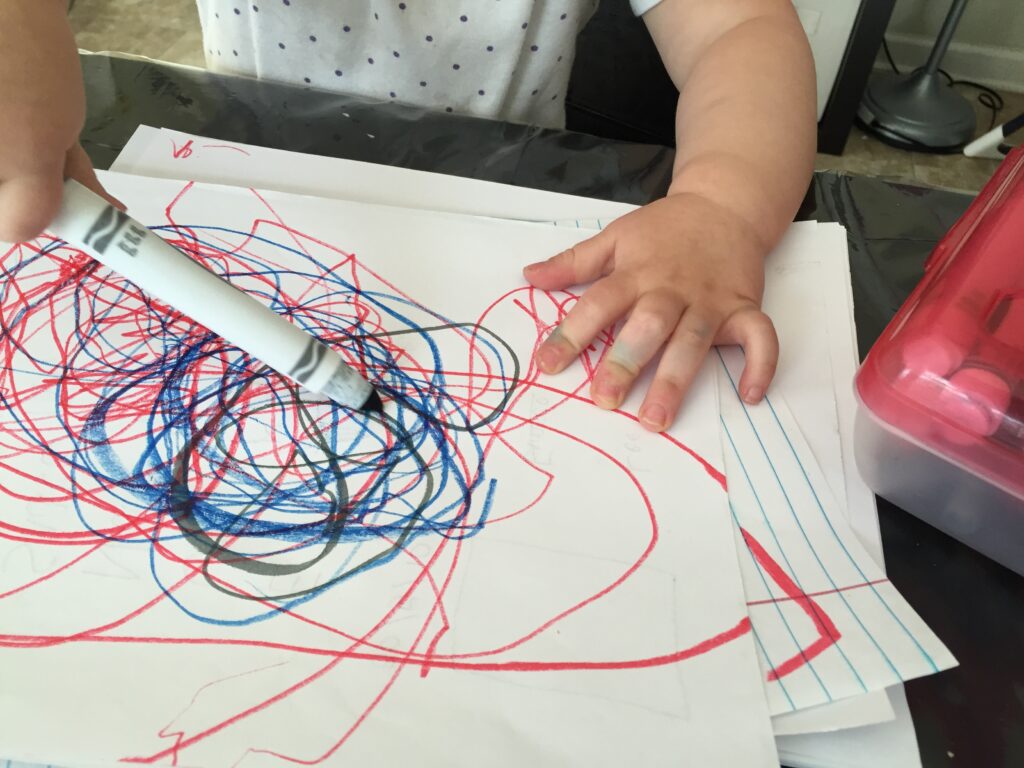
16 Easy and Effective Ways to Use Stickers With Beginner Writers!
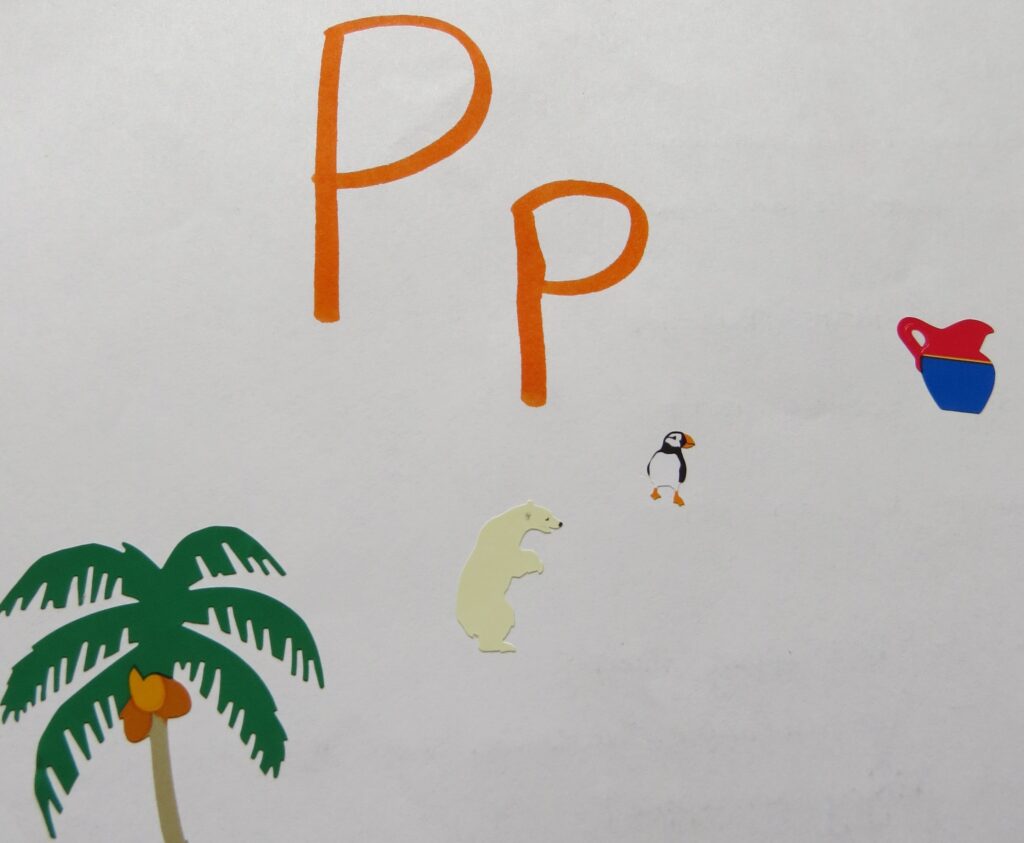
Help Children Learn to Write: 10 Strategic Steps

Learning to Read by Writing Sight Words Sentences
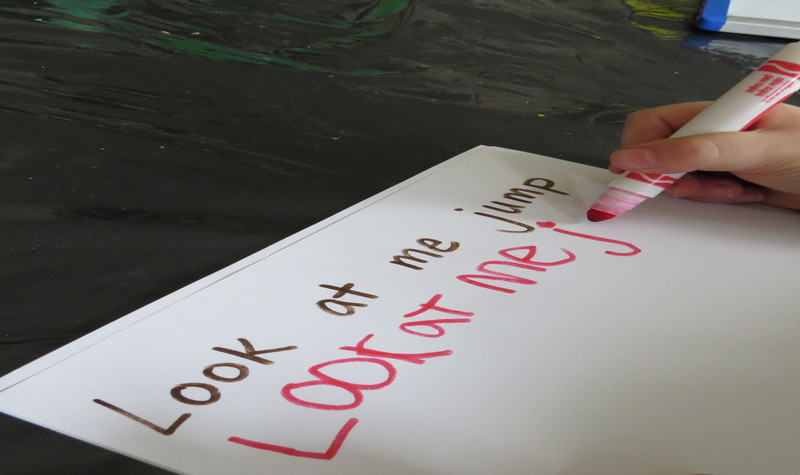
Help children learn to read by writing!
